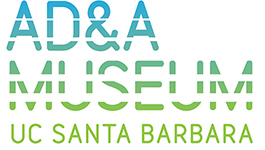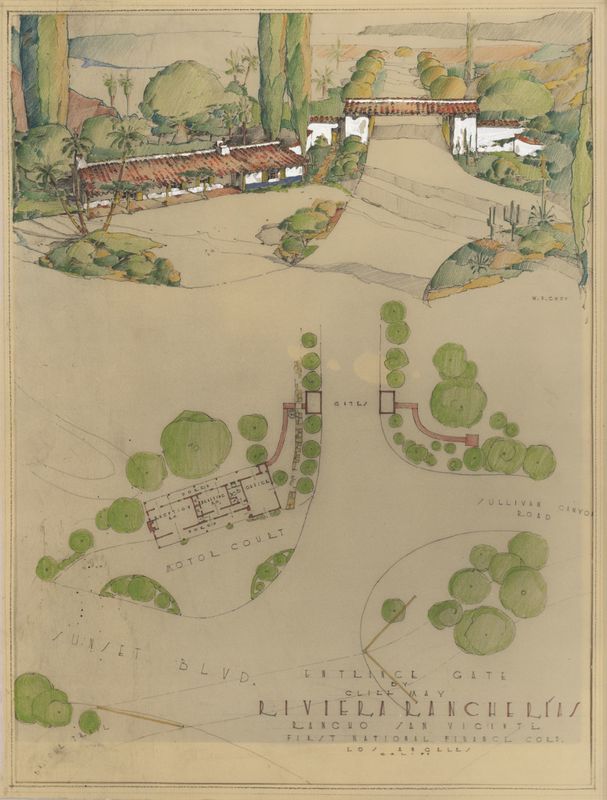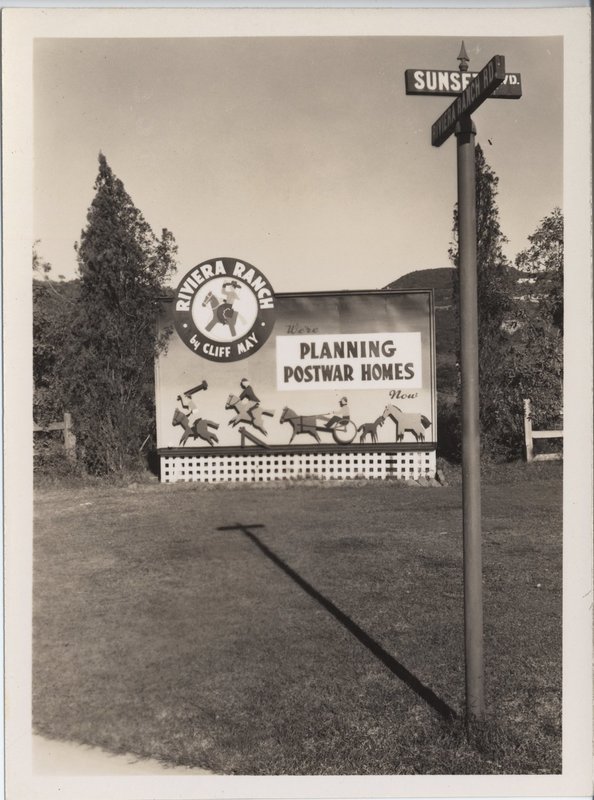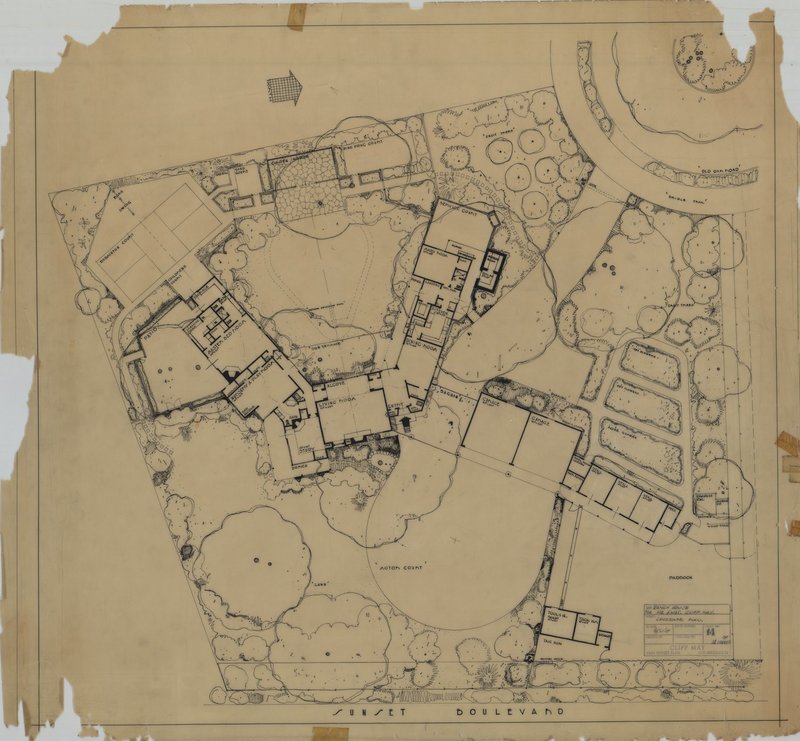Riviera Ranch
Riviera Ranch: Rancho goes Modern
The partnership between Cliff May and the financier John A. Smith lasted more than ten years, until in 1949. In his 1984 oral history, May said of Smith, “he was very like my second father.” Their most important project together was the Riviera Ranch development in west Los Angeles.
Making much of its echoes of early California, May began by naming the development Rancho San Vicente, dwelling on its status “as the last remaining parcel of ... a grant from the King of Spain” and proposed the use of house names such as La Casa de la Esquina, Ranchito de la Colina, and Rancho Aliso, which would be reminiscent of this history and suggestive of the topographical distinctions he had made in siting and planning them.
These unbuilt entrance gates indicate May’s vision for Riviera Ranch as a secluded world. The imagined landscaping is a fanciful mixture of cacti and palm trees. The building on the left is an architectural office with drafting and reception rooms. Cliff May did eventually build an office for himself here in 1949, at 13151 Sunset Boulevard, though of a different design.
Late in 1938, Smith and May acquired 36 acres beside Sunset Boulevard at the mouth of Sullivan Canyon and across from the polo grounds of the Riviera Country Club that had opened in 1927. Smith and May used the proximity to the County Club in their advertising to reinforce the equestrian theme of the Riviera Ranch tract, which they developed with riding trails and a common paddock and where most of the houses that May designed included stables.
May designed and built more than twenty houses in Riviera Ranch and expressed his most cogent ideas about the ranch house and the way of life it could represent in a modern city. Though Riviera Ranch now sits in the middle of west Los Angeles, surrounded by houses and bordered by busy Sunset Boulevard, these images from 1938 show how rural and undeveloped the area was when May began construction.
Deed restrictions for Riveria Ranch required that “[all] residences in said tract shall be of the California Ranch House type, or of such similar architectural design as to harmonize with the California Ranch House type in outward appearance.”
It took nearly ten years for half of the 36 lots of Riviera Ranch to be occupied: not until June 6, 1948 did May write to the U.S. Postmaster to ask that mail boxes be placed in front of the individual houses, a request he could not make until Tract 11470 was at least 50% completed.
Cliff May’s house #3 is perhaps the purest expression of May’s ideas about the livability of the ranch house. It combines a romantic early California ranch house with modern conveniences. House Beautiful devoted over 20 pages to it and introduced the Mays as “a family that really knows how to live.”
Cliff and Jean May described in their own words how their family lived in the house and its many special and innovative features, such as a walk-in freezer room to store so much food in bulk that they only shopped for groceries four times a year; a pantry designed so that the labels on the cans were all visible at once; a laundry machine conveniently located on the back porch; an intercom system for checking on the children from the master bedroom; and a projector hidden under a painting to show films on a screen let down from the living room ceiling. Jean Lichty May contributed many of the ideas for these livable and modernizing details.
When the house was built in 1938–1939, the interior was connected to the outdoors visually through windows facing a sun terrace. In 1949, May changed some of those windows to glass doors. He also added heating under the concrete floor of the outdoor area adjacent to the living and dining rooms, as well as a sunken fire pit just outside the heated area. These changes allowed the sun terrace to be used for activities in the living and dining rooms. Though the pool was seen in the early plans, it wasn’t built until 1956.
Cliff May house #4, or the "Skylight" house, illustrates May’s eagerness to experiment, something he was particularly willing to do in the houses he designed for his family. Christian (Chris) Choate and May together designed it, with landscaping by Thomas Church. Choate, a licensed architect, worked in May’s office and became a partner with May in Cliff May Homes, producing prefabricated tract housing. The experimentation in this house clearly came out of their discussions about low-cost housing.
The house was unusual, especially for Riviera Ranch, because it did not sprawl but was rectangular and compact in its plan. May and Choate brought the patio inside the dwelling and covered it with a large skylight, about 30 feet by 50 feet, which had a retractable glass cover that was opened and closed by a motor. May collapsed most of the rooms into a single space that could be customized by moving around cabinets on wheels that served as temporary walls.
House and Garden published Cliff May #4 in May 1955, showing the plans and a cartoon of the movable cabinets. May and Choate started the design with the necessary exterior walls and roof. They added glass shower doors on two of the corners for bathrooms and a half wall with plumbing for the kitchen. It was a 1,600 square foot house, which was approximately a third larger than a typical tract house of 1,200 square feet.




